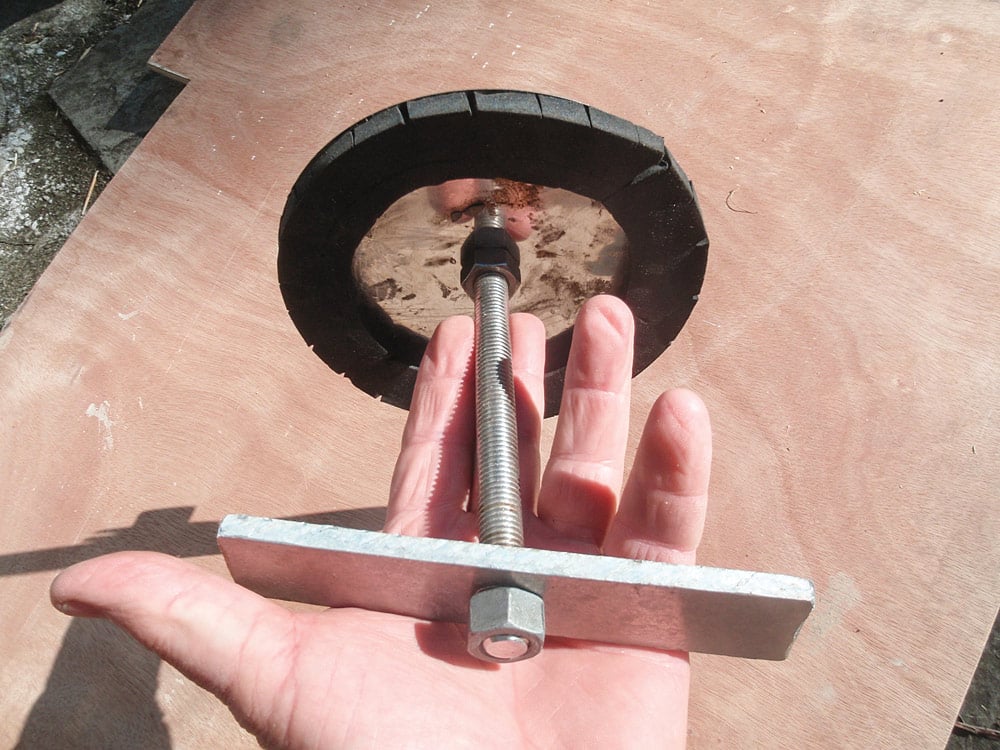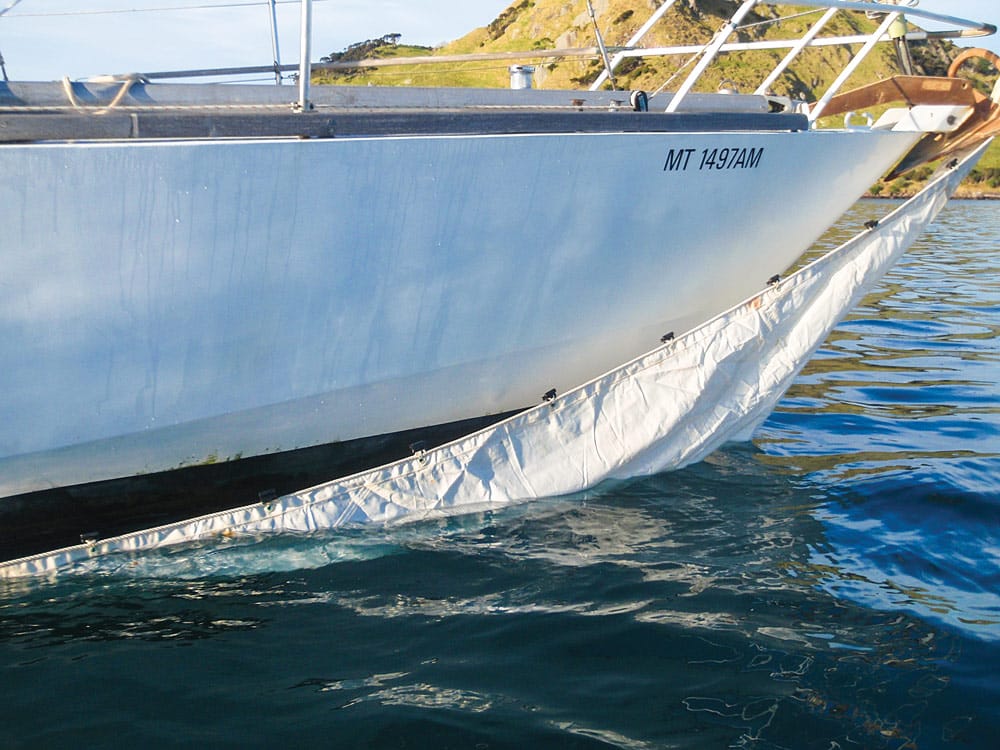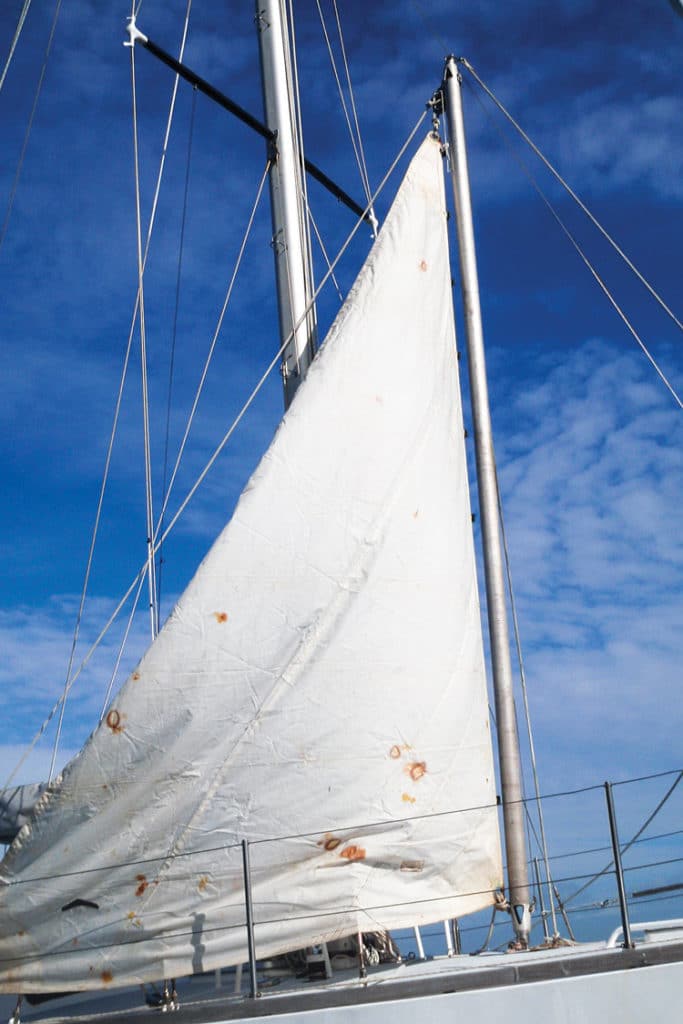
Decades ago, Doris Day sweetly reminded us: “Que sera, sera. The future’s not ours to see.” Perhaps not specifically, but the successful evolution of Homo sapiens is largely due to our ability to envision the future, anticipate contingencies and develop strategies to influence the outcome.
I believe that this is the core element of sound seamanship, which might simply be termed “forehandedness.”
While it is true that an ounce of prevention is worth a pound of cure, no amount of preparation can absolutely eliminate every crisis at sea, for the oceanic experience is fluid in every sense of the word. Therefore, our imagination must extend into the realm of emergency management.
And what are our most likely emergencies? An 11-year study conducted by the U.S. Coast Guard revealed that sailors: fall off their boats, set them alight, fail to keep the mast up or the water out, experience more draft than depth, lose steering and hit hard things with soft bodies.
Each of these topics deserves an article unto itself. But by touching on just a few, I hope to get our minds percolating on plans specific to certain situations, but more important, develop the calm confidence under stress to creatively solve even unforeseen emergencies.
Fire:
The most obvious sources of onboard fire would be the galley and engine room, as both run on flammable fluids. However, from stem to stern, a modern vessel is laced with potential hot spots via complex wiring. A 12-volt arc from a loose cable can create temperatures that exceed those on the surface of the sun. Make sure all crew know where and how to shut off the main battery supply quickly, and understand that water is the worst possible way to fight an electrical fire. Ensure that there is a well-labeled porthole in the engine box or engine room able to accommodate the extinguisher’s nozzle. Air is fuel; opening the compartment may encourage a smoldering fire to burst into insuppressible flames.

But, no matter the nature of a fire, we should never allow it to get between us and our suppression equipment. This means that extinguishers and fire blankets should be spaced at both ends of the boat. There is no such thing as a small fire in confined spaces because toxic smoke can fill the cabin in seconds. At the dock, we may have admirably practiced escaping via the main companionway and the bow hatch, forgetting that at sea, that bow hatch is often blocked by the ship’s dinghy.
There will be no call for help if the handheld VHF radio and EPIRB are left below. Are they in a handy grab bag? Does everyone know where that is? Even if it is determined that the fire can be contained, delegate one crewmember to immediately prepare abandon-ship equipment.

Steering:
On one of my Pacific crossings I heard four maydays on the radio, all of which were related to steering failure. Auxiliary self-steering systems, as opposed to servo-pendulum styles, offer true redundancy in the event of main-steering failure. That is if you can free up a rudder jammed hard over. Identify cutout points in your system, such as cable clamps, quadrant keyways and areas where you can access and cut hopelessly jammed cables. Can you get your wrenches or bolt cutters in there?
Have you tested the true viability of your emergency tiller? Is there a pre-shaped bung next to the gaping hole where the rudder stock used to be? Don’t laugh, I have seen several incidents where the shaft simply parted, and the rudder fluttered down through thousands of feet of empty ocean.
There is a plethora of theoretical jury-rigged steering systems, none of which will work on a poorly balanced boat. First, practice getting the sail combinations and trim to balance the boat as finely as possible. Move ballast forward to reduce weather helm, aft to increase it, and port and starboard to create a turning bias. Even the backstay adjuster can contribute to control. Once these forces are aligned, you might find you can roughly steer with the sheets and traveler alone. Don’t forget prop walk as a final touch.
Lines crossed from a headsail to a tiller, counterbalanced with a bungee cord, is perhaps the simplest form of self-steering (see “Take A Free Ride,” January/February 2018). A trailing bucket or small drogue on a bridle leading to outboard winches can be moved across the quarters by easing on one winch and hauling on the other. This will slow the vessel but help maintain some steerage. A pre-drilled panel of plywood, such as a locker cover, can be attached to the spinnaker pole with clam clamps. Practice the rope work required to harness the new tiller onto the pushpit.
Flooding:
At the first sign of filling bilges, certainly hit the switch on the electric bilge pump. But, the cardinal rule of flooding is to stop it. If it is a breech in the hull or a failed through-hull fitting, you can pump until the batteries are flat and your arms fall off, and still not have ascertained, much less rectified, the problem.
Start by closing all the through-hull valves, the location of which all the crew must be familiar with. Don’t forget the packing gland, because it is a likely culprit. Always have an appropriately tapered wooden bung near each through-hull fitting. If the hull itself is breached, a small sail can be roped overboard from the bow and slid aft to create a diaper patch. This will seldom stop a leak, but will slow it substantially to give you time to fasten your prefabricated external patches. That is why you always have to have a set of mask, snorkel and fins handy, used in conjunction with a safety harness and long tether.

Of course, you must have a dual-action high-capacity manual bilge pump, but that Y-valve you fit to your marine head makes a spare manual bilge pump for any extra hands to man. And when bilge debris clogs the pump valves, as it too often does, there is always those medium-size buckets you need to carry for just such an emergency.
Grounding:
The moment that your keel kisses Mother Earth, determine the state of the tide and the predicted winds. If the tide is flooding, will you be pushed on or off the danger? If off, heel the boat with a dinghy full of water to expedite the matter, and have a cup of tea. If on, run a kedge anchor from the bow as far into deep water as possible. A long nylon rode can stretch up to 20 percent of its length. If heavily tensioned, this elasticity will help nudge the vessel’s bow around with the lift and fall of each wave. If the tide is ebbing, heel the boat to the uphill side. Lay out protection for the hull, such as old tires or fenders. Close off any potential internal leaks, such as fuel lines to a heater, underwater through-hulls, etc., and check that paint locker to ensure that caustic fluids or noxious fumes are not escaping into the bilge.
Dismasting:
We will always be tempted to salvage what we can of our terribly expensive rigs. But in so doing, will that Gordian knot of rope and cable eventually foul the propeller or rudder? Will the serrated stub of the mast chew away at the hull? The first plan of attack should be to maneuver the vessel to the leeward side of the toppled rig. Typically, one carries a massive bolt cutter to chop it all away. But have you tested those cutters on a piece of your largest-diameter stainless-steel wire? In any event, the furling gear will prevent you from getting at the forestays. Did you pack a good hacksaw, or better yet an (always charged) 18-volt grinder with a cutting disc already fitted?
Do you have a spare VHF or AIS antenna? There will never be a time when you need them more.
Another approach is to splay your split pins a mere 15 degrees. They are then easily extracted with a simple set of hand pliers. In a gale, the most likely condition for a dismasting, it may be advisable to cut away all but the headstay. The sunken rig will then act as a sea anchor and keep the vessel head to wind until conditions allow an attempt at a jury rig.
I have securely fastened to my deck a 17½-foot aluminum spinnaker pole of substantial diameter and weight. It is far too large for a vessel of my size. It would be less cumbersome to set if I left it attached to the mast. But then I would lose it should the main rig fail. The jaw snaps perfectly to a hoop on the deck-step box. I have lines already designated, and the knots and attachment point identified to tension two stays and two shrouds. I have a shackle attached to the pole, which will hold the block for the makeshift halyard to hoist my free-footed trisail. Ah, but have I factored in that there will be new and unusual sheeting angles?
Your antennas will most likely go over with the mast. Do you have a spare VHF or AIS antenna? There will never be a time when you need them more.
The point of all this is: “Think it through!” That is, hypothesize the myriad situations that could go wrong and visualize what your response will be, what materials will be required, what skills should be practiced, who on board will be assigned to what tasks. Involve your crew. These mental exercises can be engaging, educational and even fun. If you make it a game before it isn’t, you will be able to handle any and all emergencies at sea with competence and confidence.
Over the course of two circumnavigations, contributing editor Alvah Simon has pondered or practiced all aspects of planning and seamanship.








